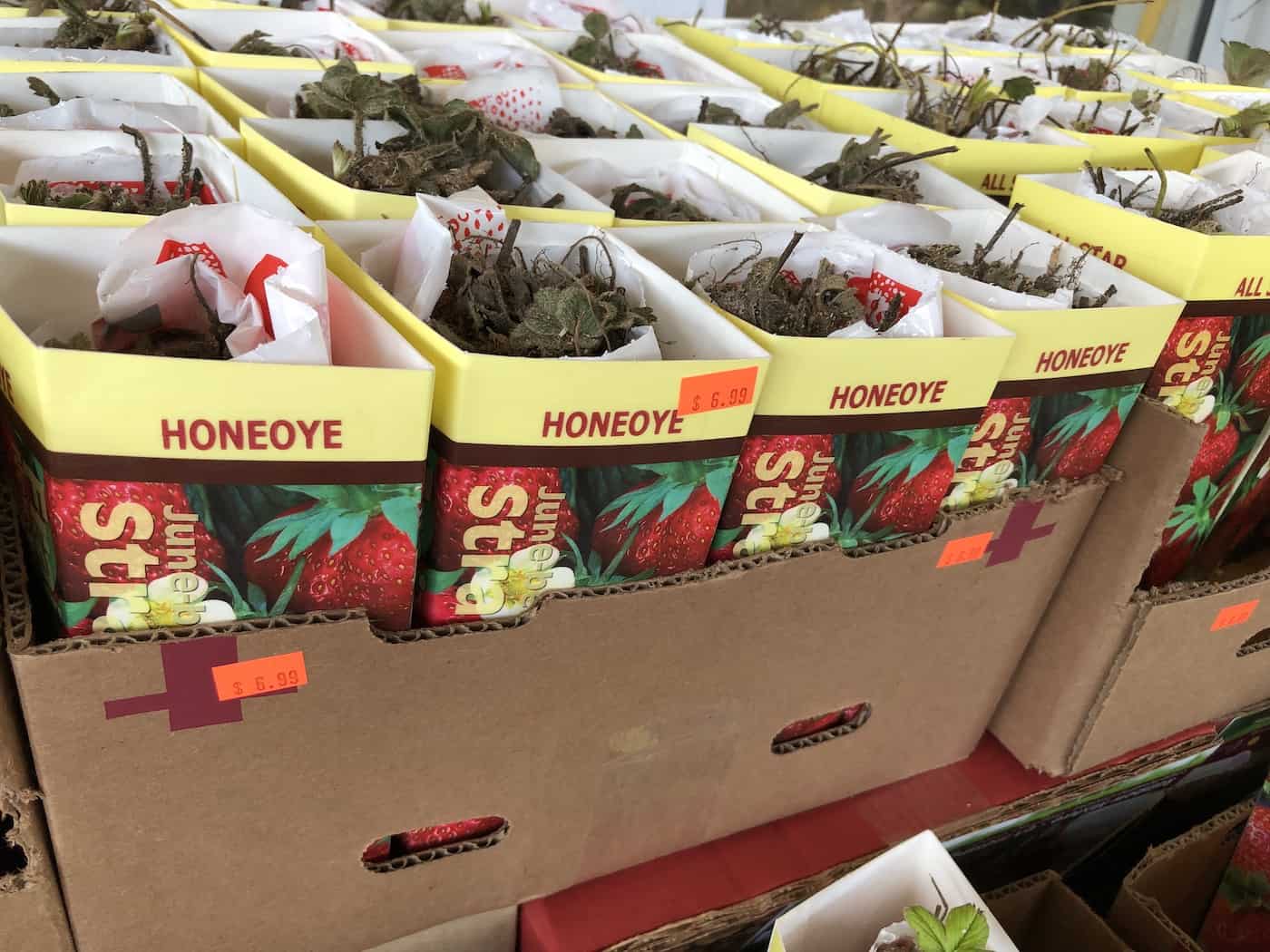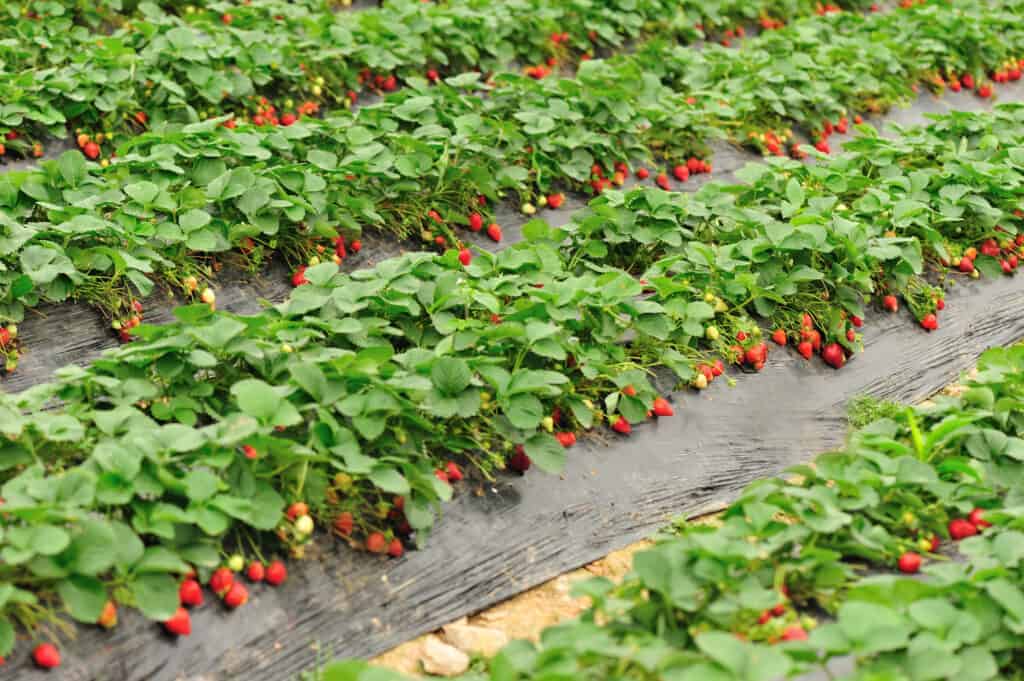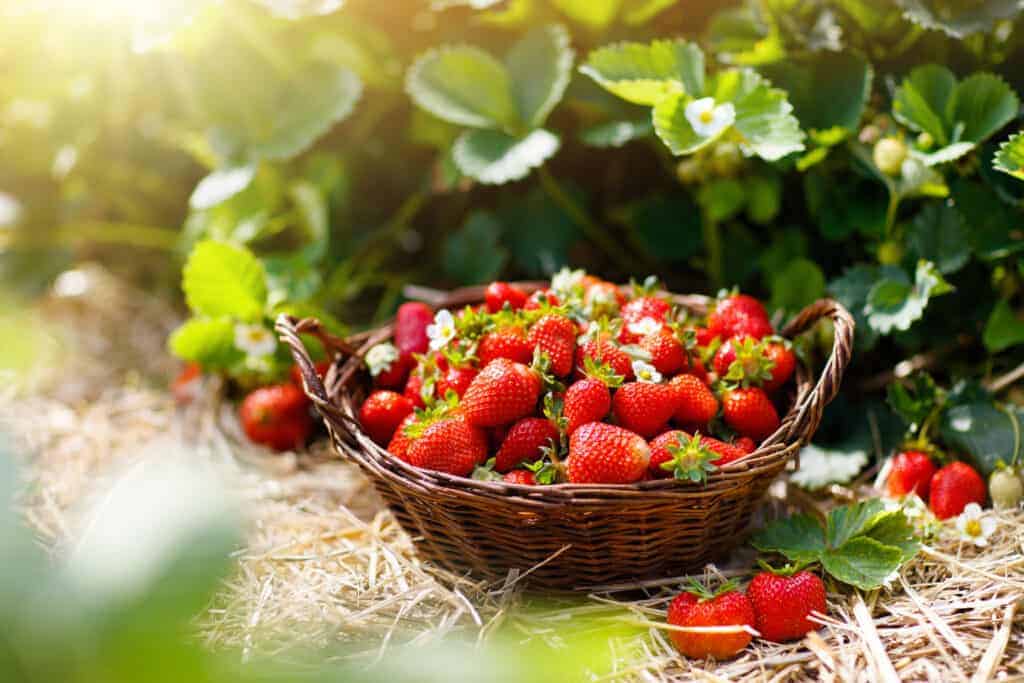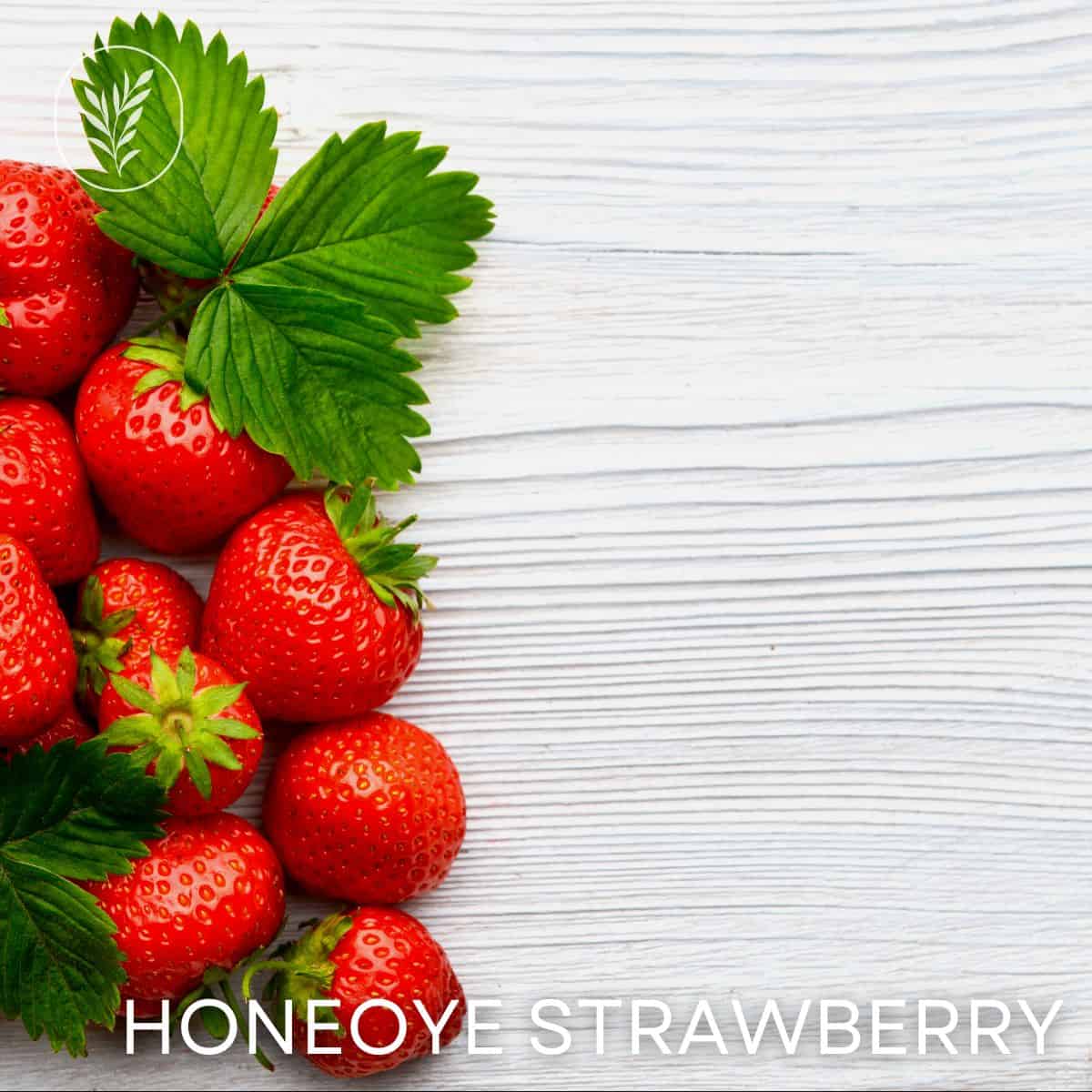Looking for a bumper crop of shiny red strawberries that grow on cold-hardy plants? It’s time to try Honeoye strawberries!
The Honeoye strawberry is a June-bearing garden strawberry cultivar known for its very large, bright red strawberries. These plants produce a large crop over a 3-4 week period, which typically occurs from mid-June to early July. Honeoye strawberry plants tend to grow vigorous runners after the berry crop ripens. This cultivar was bred in Geneva, New York, and tends to produce quite well in cold climates.
Read on to learn all about Honeoye strawberries!
Honeoye strawberry basics
Honeoye strawberry plants are one of the most popular varieties of strawberry and have been for over 30 years. These June-bearing plants were developed by the Cornell Research Station in Geneva, New York, in 1979 as a cross between ‘Vibrant’ and ‘Holiday’ strawberries. Honeoye berries have great flavor and are perfect for eating fresh.
The Honeoye strawberry is unique because they have an unusual level of winter hardiness for such a productive strawberry plant. This cultivar also has high productivity and produces a large amount of fruit each season. This variety of strawberries is also quite reliable in terms of producing well year after year.
This variety of strawberries will get its best flavor when grown in raised beds or lighter soils. You can certainly grow them in the ground, where they are usually configured in a matted row system. But if you have heavy clay soil that tends to develop puddles of water after a rain, consider either working some organic compost into your soil before planting or planting them in raised beds.

Honeoye strawberry flavor profile
Honeoye strawberries, when fully ripened, taste like the fresh, homegrown strawberry you might imagine – full of that characteristic strawberry taste and aroma. They have a classic “homegrown strawberry” flavor. They are sweet, juicy, and firm.
Honeoye strawberries are a classic type of strawberry. They are cone-shaped berries and can be used for a variety of things, such as jams, preserves, pies, or in baked goods. Honeoye strawberries have a firm texture and tend to be bright red and glossy in appearance. The generous harvests of this plant allow gardeners to store and use a large number of strawberries.

How to grow Honeoye strawberries
When you want to transplant Honeoye strawberries, you should make sure to prepare the berry beds early in the spring or in the fall of the previous year. You’ll want to take control of the weeds and remove any dead plant debris from the area before planting. It can also be helpful to work some organic compost into the soil before planting.
Make sure you’re planting the strawberries in a spot that gets at least a bit of sunlight. The plants will grow best when they have a minimum of 6-8 hours of direct sunlight each day.
You’ll typically get the optimum or best flavor out of your Honeoye berries if they are grown in medium to light soil. This is generally a sandy or loamy soil as opposed to heavy clay. Heavy clay soil makes water drainage difficult, which can drown the roots of the strawberry plants (they don’t like “wet feet”).
This type of strawberry plant actually has little to no soil disease resistance, so gardeners need to take care to keep the plant healthy. The soil should be well-drained and light. Mulching can also be a good addition! This will also help to keep the Honeoye plants healthy and reduce the chance of disease (while also raising the strawberries up off the moist soil).

Planting Honeoye strawberry plants
Honeoye strawberries can be planted using potted plants from the garden center or from bare-root strawberry plants (see photo above). The berry plants should be planted at least a foot apart and in rows that are 4 feet apart. This will allow for the proper spreading of the plant to occur. See this guide on matted row planting for details of the standard planting configuration.
The crown of the plant should be at the level of the soil. Be careful not to bury the crown, as this can cause problems with growth. Also, try to spread the roots out radially in the soil rather than just leaving them all clumped together when you plant. Water well after planting.
Allow the plants to produce runners as they grow. Most plants should be left with 2-3 offshoot runner “daughter” plants, which can be trimmed off from the mother plant once they have successfully rooted.
You shouldn’t expect any harvest in the first year, but in the second year, you should start seeing big red berries begin to appear. The plants will continue to produce quite a generous harvest for the next four to five years.
This plant should not be planted where peppers, okra, eggplant, potatoes, or tomatoes were planted the year before. These plants are sometimes attacked by a type of disease that can also attack strawberries.

When do Honeoye strawberries ripen?
Honeoye strawberries will generally ripen in June. The berries from this plant are usually firm, large, and bright red.
The berries are perfect for eating fresh out of the garden. They are also considered to be midseason berries, and this variety tends to ripen in the early midseason.
Tips for harvesting Honeoye strawberries
Harvest your ripe Honeoye strawberries in the morning while they are still cool. Naturally, the berries should be fully formed and colored. You should only pick the berries when they are fully red in color (with no white or pink spots).
Make sure you only choose strawberries that are fully ripened because once they’ve been picked off the plant, they won’t get any riper.
When you’re picking or harvesting the fruit, you should carefully pull the strawberries from the plants. You should snap the stem about half an inch above the ripe berry. You’ll want to leave a bit of the stem on each strawberry as you remove it.
You’ll want to make sure you’re careful when you’re picking the strawberries and not overload the container because they bruise easily, and you don’t want to crush the fruit at the bottom. You should refrigerate the berries immediately after harvesting to preserve them for as long as possible.









